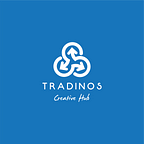700 Programming Languages
Cars, computers, phones, videogames, trains, planes, and coffee making machines. What do they have in common? To put is simply: Coding! For every technology we rely on in our daily life, code powers it one way or the other. Cars run on it, computers won’t work without it, and some cities are using it to improve their infrastructure. Coding is the future of humanity.
Programming and coding are now such an integral part of everyday life, it’s no longer just up to the nerds. Humanity might have started the coding journey with Fortran, then invented a whole new language to send Apollo to the moon.
Today, we’re almost at 9,000 — yes, nine thousand — programming language that exist. Well, technically, the number is closer to 8,945 coding languages according to the HOPL list. To give you an idea of how much advancement we made regarding coding and technology, it’s enough to say that the original list by J.E. Sammet in 1971 only had approximately 165 languages.
So, What Are We Doing with All of These Languages?
We are Coding.
Mind-blowing, right?
The rise of technology dictated the rise of programming languages with it. It’s estimated that there are between 500 to 2000 active, general-purpose programming languages, and this is just an educated guess not a concrete number. There are a lot more active languages that have a specific purpose and are used in certain circuitry or machinery that most of us had never heard of.
How about the Languages used for Websites and Applications?
Well, if you’re aspiring to start a career as a developer, then you’re looking at a list of approximately 700 languages to learn from. The language will differ paced on the direction you take, and the part of the platform you will code.
How you pick, and what you pick, will be up to you, but it’s good practice to start with one language, master it, then move to another. But, since we’re in 2021, the best piece of advice we can give you is to pick up something that is more modern, widely used, and has loads of packages or libraries.
So, How Do I Pick?
Like we mentioned above, you might learn randomly at first, but the more you orient yourself and gain experience, you’ll start going in a more defined rout. There are a couple routes you can go with making this decision. The first is to choose a programming language based on your goal and the second is to choose a programming language based on what’s the most in-demand or popular in the industry.
If you’re at the very beginning, we highly recommend trying your hand at the frontend and web development. The basic markup languages like HTML and CSS are easy to learn and fun to use. They aren’t as daunting to practice, and can be used to design attractive webpages by adding some interactive elements. Moving forward, you can learn Angular JS, JavaScript, VUE, and let’s not forget React.
However, if you’re more into data science and want to analyze data, SQL, Python and R are good starting places for data visualization. Ruby, JavaScript, and Python are also useful for automating tasks.
To start more on the complicated backend logic, consider Java, Kotlin, PHP, C++, C#, Swift, and Flutter. Of course, we’re barely scratching the surface here, but these are the language that are in high demand for the current market of web and mobile applications.
Conclusion
With plenty to learn, new languages getting developed every day, and the internet making the learning process much easier than what it used to, the road to becoming a good developer is paved with hard work, and plenty of coding. All the resources are available for you, you’re the one who can rise to the challenge!
